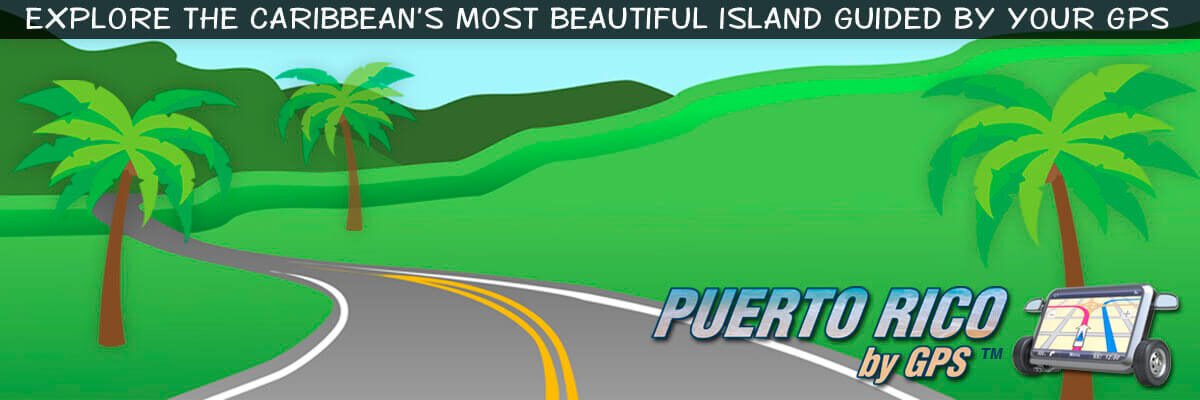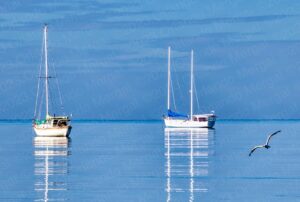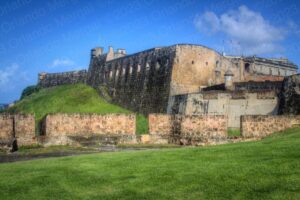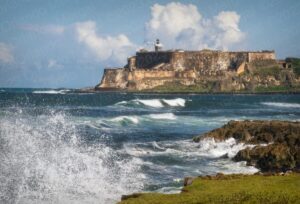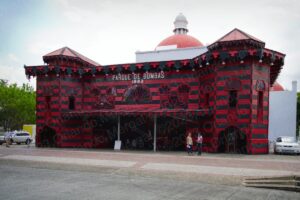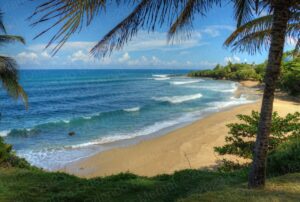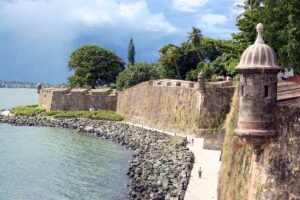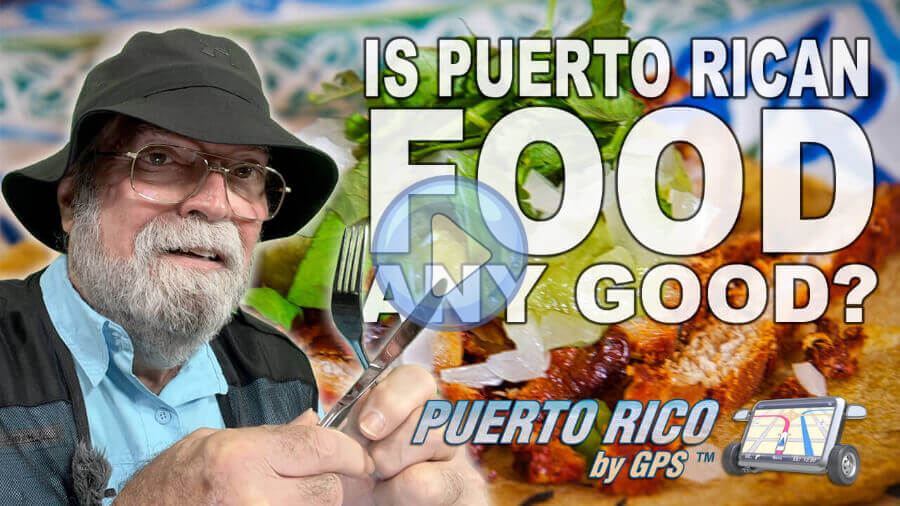 Are you sick and tired of the freezing cold, shovelling snow and being trapped inside? Or maybe it’s the opposite situation: it’s 125° outside, your air conditioner just can’t keep up and —once again— you’re sick and tired of being trapped inside. Did you know that there’s a place, just off the eastern coast of the United States, where the average yearly temperature is 80°F and you don’t need a VISA or a passport if you’re a U.S. citizen? That place is called Puerto Rico.
Are you sick and tired of the freezing cold, shovelling snow and being trapped inside? Or maybe it’s the opposite situation: it’s 125° outside, your air conditioner just can’t keep up and —once again— you’re sick and tired of being trapped inside. Did you know that there’s a place, just off the eastern coast of the United States, where the average yearly temperature is 80°F and you don’t need a VISA or a passport if you’re a U.S. citizen? That place is called Puerto Rico.
1. IS PUERTO RICO PART OF THE UNITED STATES?
It is and it isn’t. Puerto Rico became a U.S. unincorporated territory under the Treaty of Paris, signed between Spain and the United States on December 10, 1898. This treaty put an end to the Spanish-American War. Additionally, the Spanish relinquished their claims on Cuba, and ceded sovereignty over Guam, Puerto Rico, and the Philippines to the United States.
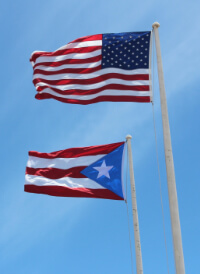 In 1917, the U.S. Congress passed the Jones–Shafroth Act (popularly known as the Jones Act), which granted U.S. citizenship to Puerto Ricans born on or after April 25, 1898. That same year the draft was imposed and thousands of Puerto Rican men were recruited for World War I. So you do the math.
In 1917, the U.S. Congress passed the Jones–Shafroth Act (popularly known as the Jones Act), which granted U.S. citizenship to Puerto Ricans born on or after April 25, 1898. That same year the draft was imposed and thousands of Puerto Rican men were recruited for World War I. So you do the math.
So, is Puerto Rico part of the United States? Well, according the Supreme Court of the United States “Puerto Rico belongs to the United States but is not a part of the United States”. In any case, Puerto Ricans are U.S. citizens, they carry a U.S. passport and are free to travel with all the protections and privileges of any other U.S. citizen.
U.S. citizens from the mainland can also enter the Island freely with the same rights and protections that they would enjoy in any regular state of the United States.
2. WHAT IS THE CURRENCY USED IN PUERTO RICO?
 Your good old greenbacks will do just fine. As a U.S. unincorporated territory, Puerto Rico is part of the United States Monetary System. That means that Puerto Ricans pay in U.S. dollars just like any other American.
Your good old greenbacks will do just fine. As a U.S. unincorporated territory, Puerto Rico is part of the United States Monetary System. That means that Puerto Ricans pay in U.S. dollars just like any other American.
It also means that you will not be subjected to currency exchange charges or any other hassles typical of traveling to foreign countries. You’ll feel just like home because you WILL be home! It’ll just be a little sunnier.
3. DO I NEED A PASSPORT TO TRAVEL TO PUERTO RICO FROM THE UNITED STATES?
Once again, no. Since Puerto Rico is a US non-incorporated territory, US citizens do not need a passport to travel to the Island. However, and this is just me, I take mine wherever I go. Like a friend of mine once said so eloquently: “my passport proves that I’m me wherever I stand”.
That said, you’ll do just fine with a valid drivers license or any other ID. Preferably it should be of the new “Real ID” variety. Vendors can always ask for an I.D. when you pay with a credit card. It’s for the safety of all the parties involved. Besides, Homeland Security has said that as of May 7, 2025, U.S. travelers must present a REAL ID compliant identification to board domestic flights and access certain federal facilities.
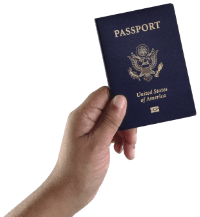 You’ll also be asked for an I.D. when entering the Spanish forts in Old San Juan, which are operated by the U.S. National Park System, if you present any kind of senior, veteran or federal employee pass.
You’ll also be asked for an I.D. when entering the Spanish forts in Old San Juan, which are operated by the U.S. National Park System, if you present any kind of senior, veteran or federal employee pass.
Finally, some establishments require a valid I.D. to buy liquor. Especially if you’re one of those privileged people that don’t look their age.
4. WHAT IS THE OFFICIAL LANGUAGE OF PUERTO RICO?
The official languages of Puerto Rico are Spanish and English. That’s the government line. Oh, and by the way, in that order. Most Puerto Ricans speak English to a certain degree, but the great majority of Puerto Ricans speak Spanish in their day-to-day interactions.
That means that you can get by without speaking a word of Spanish. But if you really want to enjoy your trip, and have fun making a fool of yourself, try learning a couple of words in Spanish. Puerto Ricans will love you for it. Besides, learning a new language is fun and it helps you better understand other cultures.
5. WHAT IS THE WEATHER LIKE IN PUERTO RICO?
Like I said in the first paragraph, the average yearly temperature in Puerto Rico is 80°F. But that’s the average. We have days when it drops to the mid 50’s and days when it exceeds 100°.
But temperature alone doesn’t dictate Puerto Rico’s weather. There’s also humidity and dust. Remember, Puerto Rico is an Island, and in case you forgot your geography that means that it’s surrounded by water. All that water makes for high humidity rates year round, especially during the summer months.
Humidity will make you feel sticky and uncomfortable. And the mosquitos? Oh my God, you can saddle them during August and September.
But there’s more. The summer months also bring Sahara Dust. Sahara Dust results from the huge sand storms that happen in the Sahara Desert and deposit dust all the way to the east coast of the United States. The video below tells you all about it. It’s short and to the point, so I suggest that you watch it.
Finally, you have hurricanes. Yep, I told you Puerto Rico was pure fun. The Island’s hurricane season extends from June 1 to November 30, but most of the serious storms happen in September. So check your weather forecast before getting on that plane.One final word about Puerto Rican weather. No place is perfect. California has droughts and earthquakes, although lately they’ve had floods and snow. Go figure. Other states have forest fires, twisters, hurricanes and blizzards. The trick is to do your homework and know when to visit.
6. WHAT ARE SOME POPULAR TOURIST ATTRACTIONS IN PUERTO RICO?
That depends on how you arrive on the Island, how long you plan to stay and how you plan to get around. Fortunately, no matter what you plan to do we have you covered.
If you arrive on a cruise ship you’ll probably have around eight hours to explore. Some ships stay overnight but most are here for a day. In that case you’ll want to visit the Spanish forts, run by the U.S. National Park Service, explore Old San Juan, maybe visit one of its excellent museums and enjoy one of its world-class restaurants.
- Cabo Rojo, Puerto Rico
- Stone Bridge, Cabo Rojo
- Window Cave, Arecibo
- Fort San Cristóbal, Old San Juan
- Fort San Felipe del Morro, Old San Juan
- El Yunque National Forest
- Ponce Fire Station
- Domes Beach, Rincón
- San Juan City Wall
Be sure to wear comfortable walking shoes, light reflective clothing, a wide brim hat and plenty of sunblock; especially during the summer months. And be sure to carry a bottle of water.
I wrote a step-by-step guide to the Old City titled “The Old San Juan Walking Tour” which takes you by the hand and explains every corner of this beautiful city. It’s an easy read and has excellent reviews. However, I do suggest that you buy it well before you visit so you’ll be familiar with what you see. It also includes GPS coordinates for every attraction mentioned and over 2 hours of high resolution online video.
If you arrive on a plane you’ll either be on a tour or you won’t. If you are, you’ll probably be taken to El Yunque National Forest (28,516 acres of pristine tropical beauty), the Bacardí Rum Distillery (the largest in the world), Luquillo Beach (the prettiest in the larger Island), Flamenco Beach (the prettiest in Puerto Rico) and if you’re lucky one of Puerto Rico’s other towns like Ponce, Caguas or Cabo Rojo.
Finally, if you travel like I do (without a schedule or a predetermined route) the entire Island is awaiting. And most of it is right here on Puerto Rico By GPS. Just drop the menus titled “San Juan Metroplex” and “La Isla” and you’ll be amazed at the dozens and dozens of interesting places that you can enjoy in Puerto Rico. And don’t forget to watch the videos.
7. IS PUERTO RICO SAFE FOR TOURISTS?
 I won’t lie to you. There’s crime in Puerto Rico, but it’s mainly related to the drug trade. This is not to give you a false sense of security. The truth is that drive-by shootings between gangs and carjackings have become commonplace. And sadly, many times the victims are totally unrelated.
I won’t lie to you. There’s crime in Puerto Rico, but it’s mainly related to the drug trade. This is not to give you a false sense of security. The truth is that drive-by shootings between gangs and carjackings have become commonplace. And sadly, many times the victims are totally unrelated.
So here are a few suggestions. De mindful of your surroundings. Don’t buy gasoline, or anything —for that matter— late at night.
Furthermore, everywhere I go I make friends with the front desk guy. He’s a local (or she). He knows what you can do and what you shouldn’t. He also knows where you should go and where you shouldn’t. Oh, and by the way, he also knows the best places to eat.
Do like I do. Don’t ask him where to eat. If you do that he’ll send you where the tourists go. Ask him where he eats. Ask him what the locals eat. Then go where he goes. That’s the surest way to explore the local cuisine.
Back to safety. There’s safety in numbers. Don’t go out alone, especially at night. If you’re unsure about an area stop a policeman and ask: “is this area safe”?
Some things are just common sense. However, my late mother used to say that “common sense is the most uncommon of the senses”.
What else can I say? Like most places today, Puerto Rico has its share of crime. But no more than New York, Los Angeles, Chicago or any other major city.
Avoid showing off expensive jewelry, cameras or computer equipment. Wear a money belt. Keep a photocopy (yes a PAPER copy) of all your important documents in your suitcase. Be sure to leave your valuables in your hotel safe, be mindful of your surroundings at night and travel in a group. You’ll have a great time.
8. WHAT IS THE TIME ZONE IN PUERTO RICO?
 Puerto Rico is on Atlantic Standard Time. That means that during the summer months it’s the same time as New York and during the winter months we’re an hour ahead. If you’re calling the west coast that’s a 3‑hour difference in the winter and 4 hours in the summer.
Puerto Rico is on Atlantic Standard Time. That means that during the summer months it’s the same time as New York and during the winter months we’re an hour ahead. If you’re calling the west coast that’s a 3‑hour difference in the winter and 4 hours in the summer.
Daylight time also varies. During mid winter you’ll get about 10 hours of daylight and during the summer you’ll get around 12.
And here’s a hint for those photographers that are planning to visit Puerto Rico. That beautiful “blue hour” period that most photographers go for (right after sunrise and right before sunset) only lasts about 20 minutes on the Island. That’s because the blue hour gets longer as you get further away from the equator.
9. WHAT IS THE FOOD LIKE IN PUERTO RICO?
In one word: “outstanding”!!! Puerto Rico has a long history of culinary influences. The original settlers were the Taínos, who introduced many condiments and roots that are still part of the Puerto Rican diet.
Then came the Spaniards, who in turn were influenced by the romans, jews and muslims. All those influences came aboard the Spanish galleons and mixed with the Taíno culture.
But it didn’t stop there. Along came African slaves, Chinese to build roads, middle eastern exiles, Cuban exiles, Dominican exiles and —of course— more than a century of American influence. They’ve all come together to produce one of the most unique and varied cuisines in the world. If you haven’t watch it already, I invite you to watch the video below.
You can spend a month here, without visiting a single attraction, just sampling Puerto Rican food. I guess that would make you a “food tourist”, but it certainly sounds like a lot of fun.
10. Will MY GPS WORK IN PUERTO RICO?
Well of course it will. Puerto Rico has a modern cellular network comparable with any major city in the United States. Furthermore, many mainland carriers either have a presence in Puerto Rico or have roaming agreements with local carriers.
You can bring a regular GPS unit or rent one with your car, but my recommendation is to simply use the one in your smartphone. Why? Because GPS units need to be updated and download the necessary maps in order to work properly. Smartphones do that automatically.
I’m an iPhone user, so I gravitate towards the Apple Maps application. However, Google Maps and Waze work just as well. It’s a matter of preference. I also carry a small smartphone holder that I clamp onto the rearview mirror of my rental car to hold up my smartphone. That way it stays at eye level and doesn’t distract me from the road.
I’m also not a fan of Apple CarPlay or Android Auto. Why? Because they take over the car radio and force you to do things “their way”. So I simply turn off bluetooth on my phone to disable them. That way the phone is one thing and the radio is another. Once again, it’s a matter of preference.
Finally, I’ve noticed that some GPS and cellular systems don’t work inside U.S. National Parks. The same thing happens at El Yunque National Forest. I don’t know if it’s a coverage issue, or that they purposefully jam the signal, but the fact is that it doesn’t work. That’s when a regular paper map comes in handy.
I know they’re hard to find and gas station attendants give you that “weird look” when you ask for one, but I keep one in my glove box for those rare occasions when my GPS drops dead.
And by the way, I always carry a paper map on the mainland as well. Just in case. The video below tells you all about GPS in Puerto Rico in a light hearted manner.
Puerto Rico is a great place to visit, especially when it’s 10°F outside (where you live). And best of all it’s just a 3‑hour plane ride away. You’ll have all the benefits of home, great climate, friendly people, tons of places to see and greaaaaat food.
Come on over. You’ll have a great time!
©2023,Orlando Mergal, MA
____________________
Bilingual Content Creator, Blogger, Podcaster,
Author, Photographer and New Media Expert
Tel. 787–750-0000, Mobile 787–306-1590
